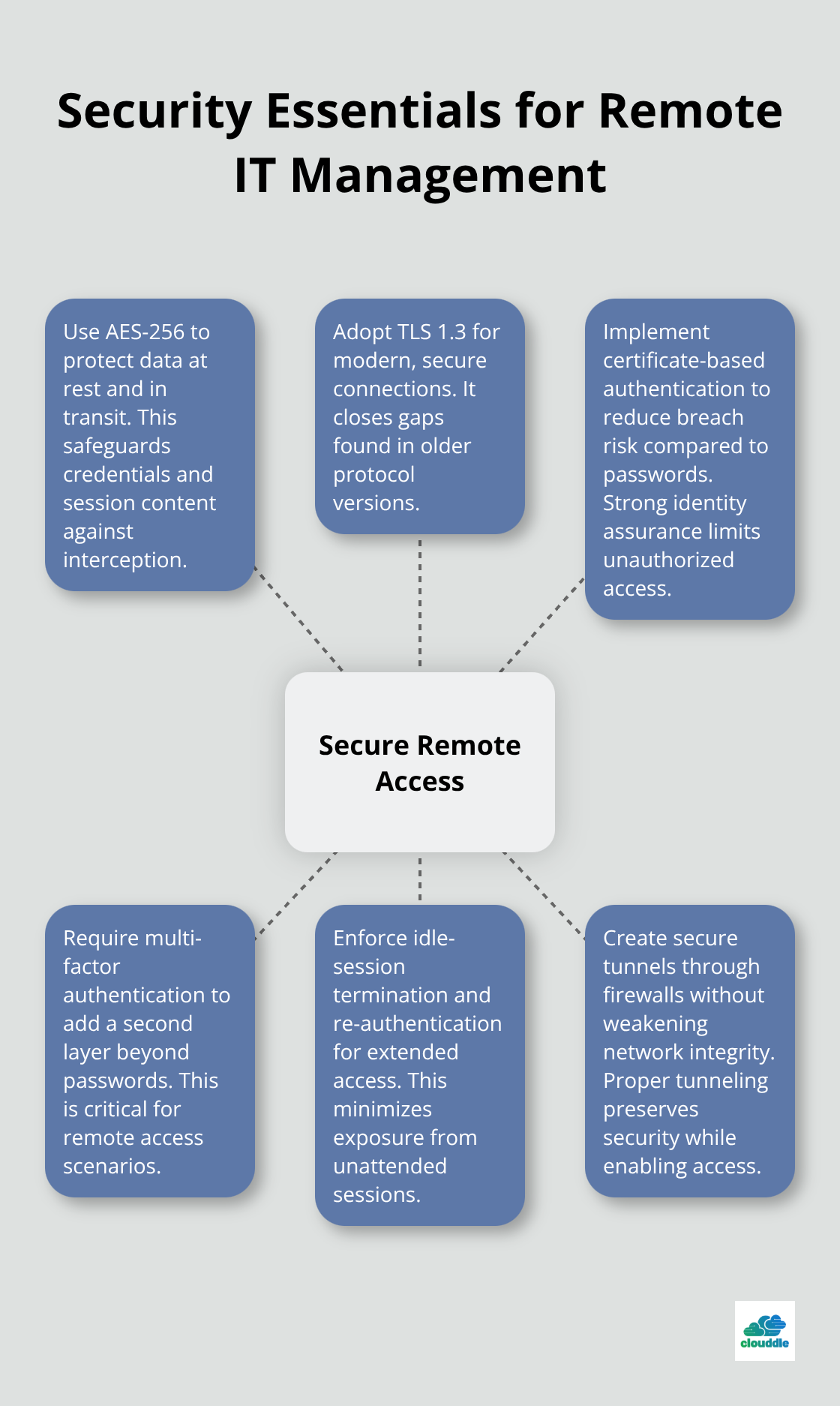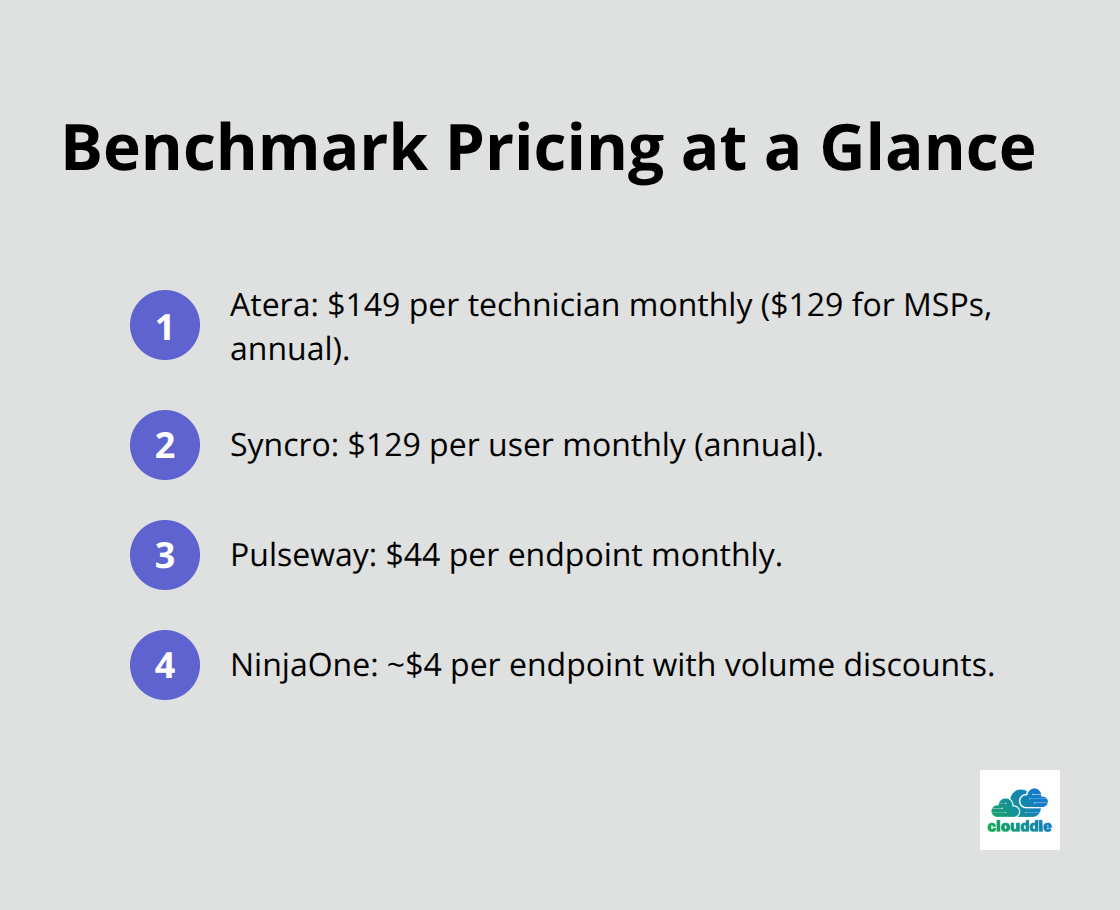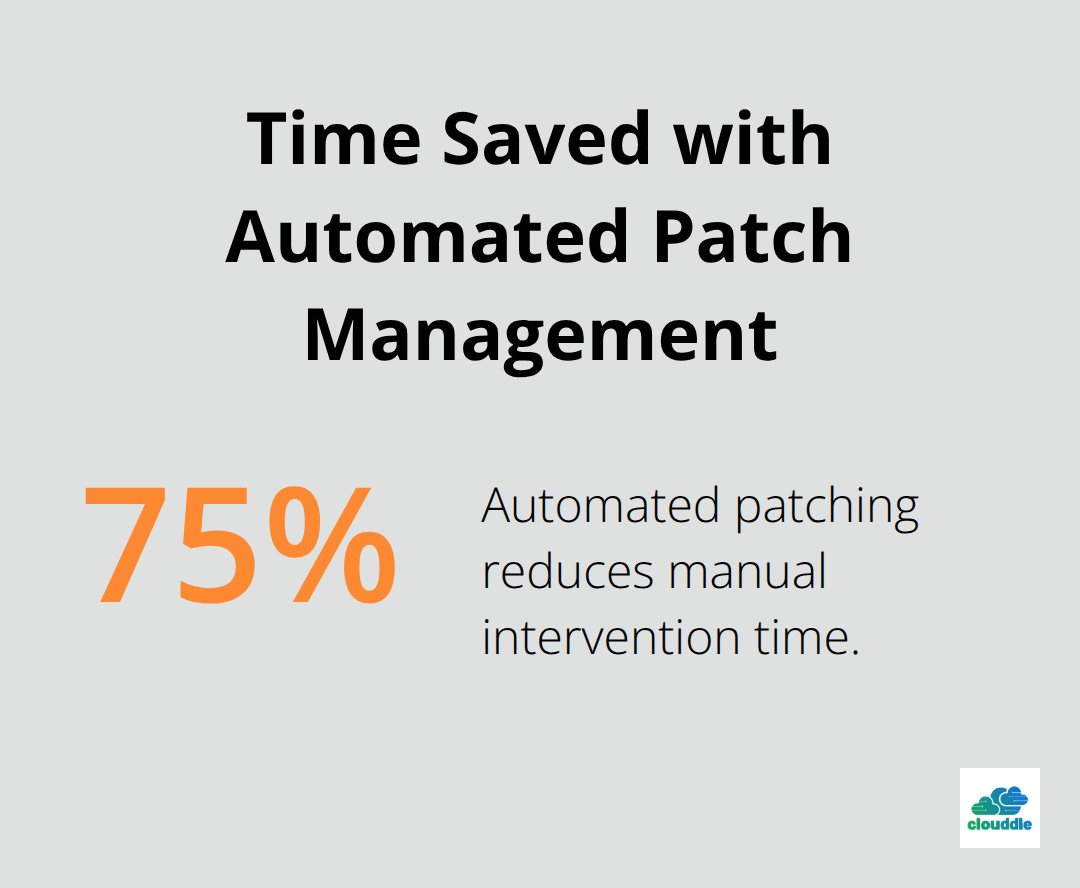Managing IT infrastructure remotely has become standard practice for businesses worldwide. The right remote IT management software can transform how your team handles system monitoring, updates, and troubleshooting.
At Clouddle, we’ve seen companies struggle with selecting the wrong tools, leading to security gaps and productivity losses. This guide breaks down the essential factors you need to evaluate before making your decision.
Key Features to Look for in Remote IT Management Software
Real-Time Monitoring and Alert Systems
Your IT team requires instant visibility into system performance across all endpoints. Effective remote IT management software must provide comprehensive monitoring that tracks CPU usage, memory consumption, disk space, and network performance in real-time. NinjaOne provides a powerful solution for IT asset management by offering real-time data on endpoint health and performance.
The software must send intelligent alerts based on customizable thresholds rather than flood your team with false positives. ManageEngine OpManager uses AI-driven performance thresholds to help teams identify bottlenecks before they impact operations. Look for solutions that offer customizable dashboards where your technicians can view critical metrics at a glance. Site24x7 provides flexible dashboard customization that allows teams to focus on the most relevant performance indicators for their environment.
Automated Patch Management and Updates
Manual patch management wastes valuable IT resources and creates security vulnerabilities. The right software should automatically detect missing patches across Windows, macOS, and Linux systems, then deploy updates during scheduled maintenance windows. Atera starts at $149 per technician monthly and includes automated patching that can schedule updates based on criticality levels.
Your chosen solution must support patch testing in isolated environments before full deployment. Syncro offers a powerful scripting engine (starting at $129 per user monthly) that automates complex update procedures. The software should also provide detailed reports on patch compliance rates across your entire infrastructure. Automated patch management procedures reduce human intervention, increase successful patches, and decrease execution time compared to manual processes.
Remote Access and Control Capabilities
Direct remote access to endpoints eliminates the need for costly on-site visits. Your software must support unattended access to servers and workstations with session recording capabilities for compliance purposes. Pulseway integrates with communication tools like Slack and Zendesk, starting at $44 monthly per endpoint on annual contracts.
The solution should offer file transfer capabilities, remote registry editing, and command-line access for advanced troubleshooting. Multi-monitor support becomes essential when you support users with complex desktop setups (particularly in enterprise environments). Look for platforms that provide granular permission controls, allowing you to restrict technician access to specific functions or systems based on their role.
These core features form the foundation of effective remote IT management, but security and compliance requirements add another layer of complexity to your selection process.
Evaluating Security and Compliance Requirements
Data Encryption and Secure Connection Protocols
Your remote IT management software must implement AES-256 encryption for all data transmission and storage. This extremely secure encryption standard protects sensitive information during remote sessions and prevents unauthorized access to your network credentials. Splashtop provides end-to-end encryption with multi-factor authentication, making it a premier choice for organizations that handle sensitive data.
The software should also support TLS 1.3 protocols for secure connections, as older versions create vulnerability gaps that cybercriminals actively exploit. Connection protocols matter more than most IT teams realize. Your chosen solution must establish secure tunnels through firewalls without compromising network integrity.

Look for software that supports certificate-based authentication rather than password-only access, as this reduces breach risks significantly according to Microsoft security research. The platform should automatically terminate idle sessions and require re-authentication for extended access periods.
Compliance with Industry Standards and Regulations
GDPR, HIPAA, and SOC 2 compliance isn’t optional for modern businesses. Your software must generate automated audit logs that track every remote session, including user actions, file transfers, and system modifications. These logs become essential during compliance audits and security investigations.
Healthcare organizations that use non-compliant remote management tools face HIPAA violation penalties that can reach up to $25,000 per violation category per year. This makes compliance features a business necessity rather than a nice-to-have feature. The software should provide built-in compliance features that help businesses adhere to industry regulations efficiently.
User Authentication and Access Control Features
The software should provide granular permission controls that restrict technician access based on their specific roles and responsibilities. Some technicians need full administrative privileges, while others only require read-only monitoring capabilities. Role-based access control prevents accidental changes and limits potential damage from compromised accounts.
Session recording capabilities help organizations demonstrate compliance during regulatory reviews and provide evidence for security incident investigations. Multi-factor authentication adds another layer of protection (particularly important for remote access scenarios). The system should support both attended and unattended sessions with appropriate security controls for each access type.
These security foundations protect your infrastructure, but the financial impact of your software choice extends far beyond initial licensing fees.
What Will Remote IT Management Software Actually Cost You
Subscription Models vs Perpetual Licenses
Remote IT management software prices vary dramatically based on deployment models and hidden expenses that most businesses overlook during evaluation. Subscription models dominate the market, with Atera charging $149 per technician monthly for IT departments and $129 for MSPs with annual contracts. Syncro starts at $129 per user monthly with annual agreements, while Pulseway begins at $44 monthly per endpoint. NinjaOne typically charges $4 per endpoint with volume discounts, which makes it cost-effective for larger deployments.

Perpetual licenses require substantial upfront payments but eliminate ongoing fees. However, these licenses lack continuous updates and support that subscription models provide. Organizations must weigh immediate cash flow impact against long-term operational costs when they evaluate these options.
Implementation Costs That Companies Ignore
Setup and training expenses often double your first-year software costs. Employee training consumes 20-40 hours per technician during the initial rollout, which translates to $2,000-$4,000 in lost productivity per team member at average IT salary rates. Data migration from existing systems requires specialized expertise and adds $5,000-$15,000 for mid-sized organizations.
Integration with existing ticketing systems, CRMs, and monitoring tools demands custom development work that ranges from $3,000-$10,000 depending on complexity. Many vendors charge additional fees for professional services during implementation (particularly for complex enterprise environments).
ROI Calculations Beyond Software Savings
Remote IT management software delivers measurable productivity gains that justify investment costs within 6-12 months. Organizations experience reduced need for large IT departments on-site and optimized IT overhead through centralized, cloud-based support. Automated patch management reduces manual intervention time by 75% and frees technicians for strategic projects.

Companies that use comprehensive asset management software simplify IT operations, elevate productivity, and foster a proactive approach to asset management. The software pays for itself when it prevents a single major outage that typically costs businesses $5,600 per minute in lost productivity. These measurable benefits demonstrate clear financial returns that extend far beyond initial licensing investments.
Final Thoughts
Remote IT management software selection demands careful evaluation of technical features, security standards, and total cost of ownership. Real-time monitoring, automated patch management, and secure remote access provide the foundation for effective IT operations. Security features like AES-256 encryption and compliance with GDPR or HIPAA standards protect organizations from costly violations and data breaches.
Cost analysis must include implementation expenses, training time, and integration complexity beyond subscription fees. Automated systems reduce manual intervention by 75% and prevent outages that cost $5,600 per minute in lost productivity (making the ROI clear within months). Your decision should align with organizational needs, whether you manage 50 endpoints or 5,000 systems.
We at Clouddle understand that technology solutions must deliver measurable results while maintaining security and compliance standards. Start implementation with a pilot program that involves critical systems and key technicians. This approach minimizes risk while demonstrating value to stakeholders before full deployment across your infrastructure.


